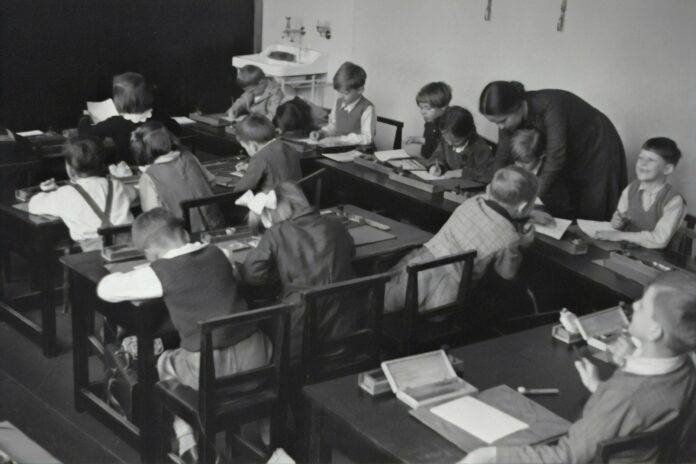Introduction to PhotoImage Class
Are you ready to take your image manipulation skills to the next level? Look no further than the PhotoImage Class! Whether you’re a seasoned developer or just starting out, mastering this powerful tool can open up a world of possibilities in creating and customizing images within your Python projects. In this ultimate guide, we’ll dive into everything you need to know about the PhotoImage Class, from its basic functions to advanced techniques that will elevate your visual creations. Let’s unlock the full potential of images with PhotoImage Class together!
Benefits of Using PhotoImage Class
Are you looking to enhance your Python GUI programming skills? The PhotoImage class is a powerful tool that can take your projects to the next level. By utilizing this class, you gain access to a wide range of benefits that can streamline the process of working with images in your applications.
One major benefit of using the PhotoImage class is its versatility. Whether you need to display static images or create dynamic animations, this class has got you covered. It allows for easy manipulation and customization of images, making it ideal for adding visual elements to your GUI applications effortlessly.
Furthermore, by leveraging the PhotoImage class, you can improve the overall user experience of your applications. With smooth image handling capabilities, you can create visually appealing interfaces that engage users and leave a lasting impression. This leads to increased user satisfaction and retention rates for your projects.
In addition, integrating the PhotoImage class into your Python codebase enables seamless image loading and display functionalities. You can efficiently manage and present images without compromising on performance or quality. This results in faster load times and smoother image rendering within your applications.
Basic Functions and Features of PhotoImage Class
Are you ready to dive into the exciting world of PhotoImage Class? Let’s explore the basic functions and features that make this class a must-have for all your image processing needs.
With PhotoImage Class, you can effortlessly load images in various formats such as PNG, GIF, and JPEG. This makes it easy to work with different types of images without any hassle.
One of the key features of is its ability to display images directly onto your Tkinter GUI window. This allows you to create visually appealing applications with just a few lines of code.
Additionally, provides methods for resizing, cropping, and rotating images. You have full control over how your images are displayed and manipulated on your application interface.
Whether you’re a beginner or an experienced developer, mastering the basic functions and features of PhotoImage Class will elevate your image processing capabilities to new heights.
Tips for Mastering PhotoImage Class
When it comes to mastering the PhotoImage Class, there are a few tips that can help you elevate your image manipulation skills. Make sure to familiarize yourself with the documentation and examples provided by the Python Imaging Library (PIL). Understanding how different methods work and their parameters will give you a solid foundation.
Experimenting with various image formats such as GIF, JPEG, or PNG can expand your versatility in working with images using PhotoImage. Additionally, practice resizing and cropping images to understand how to manipulate them effectively for different purposes.
Another tip is to explore blending modes and transparency options available within the PhotoImage Class. This can add depth and creativity to your image editing projects. Don’t hesitate to seek out online resources and forums where you can learn from others’ experiences and gather new ideas for utilizing this powerful class efficiently.
Advanced Techniques for Customizing Images with PhotoImage Class
Ready to take your image customization skills to the next level with PhotoImage Class? Let’s explore some advanced techniques that will help you create stunning visuals for your projects.
One technique is using the `subsample()` method to resize images efficiently without losing quality. This can be handy when working with large datasets or when you need images in different sizes.
Another powerful feature is applying filters like blur, grayscale, or sepia tones to enhance the visual appeal of your images. Experimenting with different filter combinations can give your photos a unique look and feel.
You can also leverage the `putdata()` method to manipulate pixel data directly, allowing for precise control over each pixel’s color values. This level of customization can result in truly bespoke images tailored to your specific needs.
By mastering these advanced techniques and exploring further possibilities within the PhotoImage Class, you’ll have the tools at your disposal to unleash your creativity and bring your vision to life through captivating visuals.
Common Mistakes to Avoid When Using PhotoImage Class
When working with the PhotoImage Class, there are some common mistakes that beginners might make. One of these errors is not properly loading the image file before trying to display it. Make sure to use the `PhotoImage` constructor to load your image file correctly.
Another mistake to avoid is forgetting to keep a reference to your `PhotoImage` object. If you lose track of the object, Python’s garbage collector might delete it, causing your image not to display.
It’s also important not to scale or resize your image using PhotoImage directly. Instead, consider using other libraries like PIL (Python Imaging Library) for more advanced manipulation and resizing options.
Avoid trying to display unsupported file formats with PhotoImage as it only accepts GIF, PGM, PPM, and PNG files by default. Convert your images if needed before displaying them in your application.
Be mindful of memory usage when working with large images. Always release unused resources and objects properly after you finish using them in order to prevent memory leaks or performance issues while running your code.
Conclusion
Mastering the PhotoImage Class can open up a world of possibilities for image manipulation and customization in your Python projects. By understanding its basic functions, exploring advanced techniques, and being mindful of common mistakes to avoid, you can take full advantage of what this powerful class has to offer.
With the ability to load, display, and manipulate images with ease, the PhotoImage Class is a valuable tool for any developer working with graphics in Python. Whether you’re creating GUI applications, processing visual data, or enhancing user experiences through dynamic imagery – mastering the can elevate your projects to new heights.
So next time you find yourself working on a project that involves images in Python, remember the tips and techniques shared in this guide. With practice and experimentation, you’ll be well on your way to becoming a PhotoImage Class expert. Embrace creativity and innovation as you harness the full potential of this versatile class in your coding endeavors. Happy coding!

